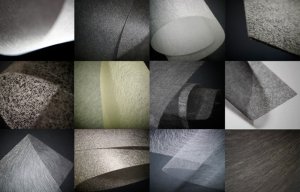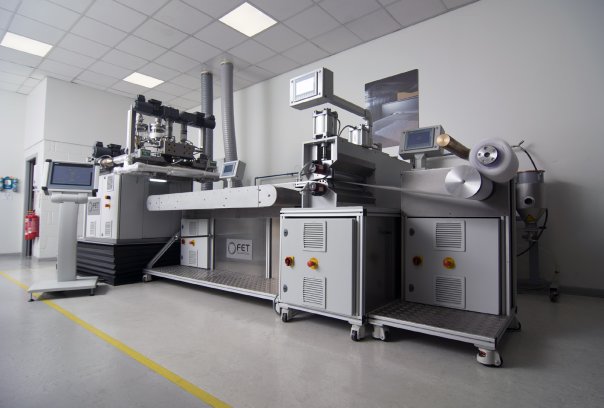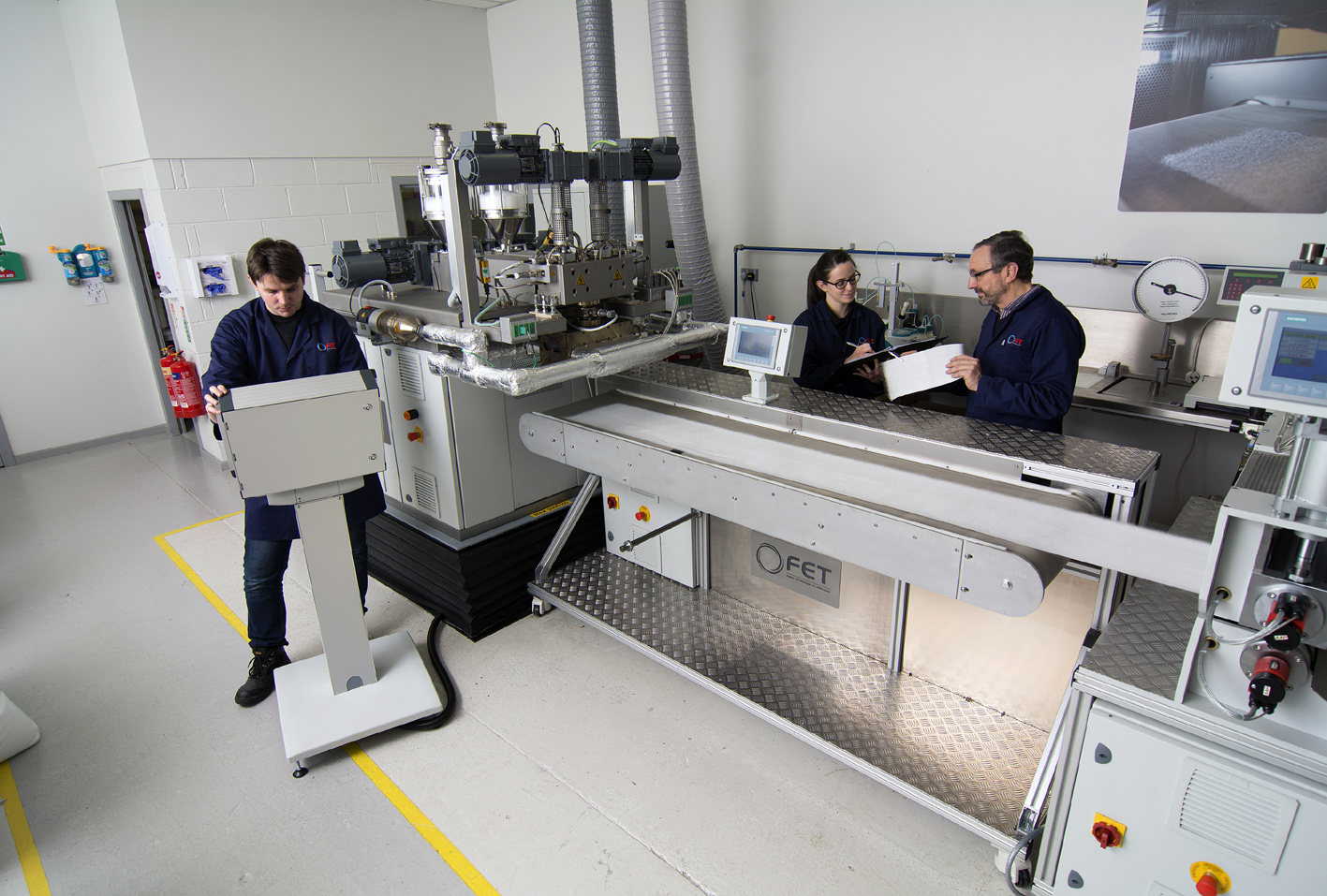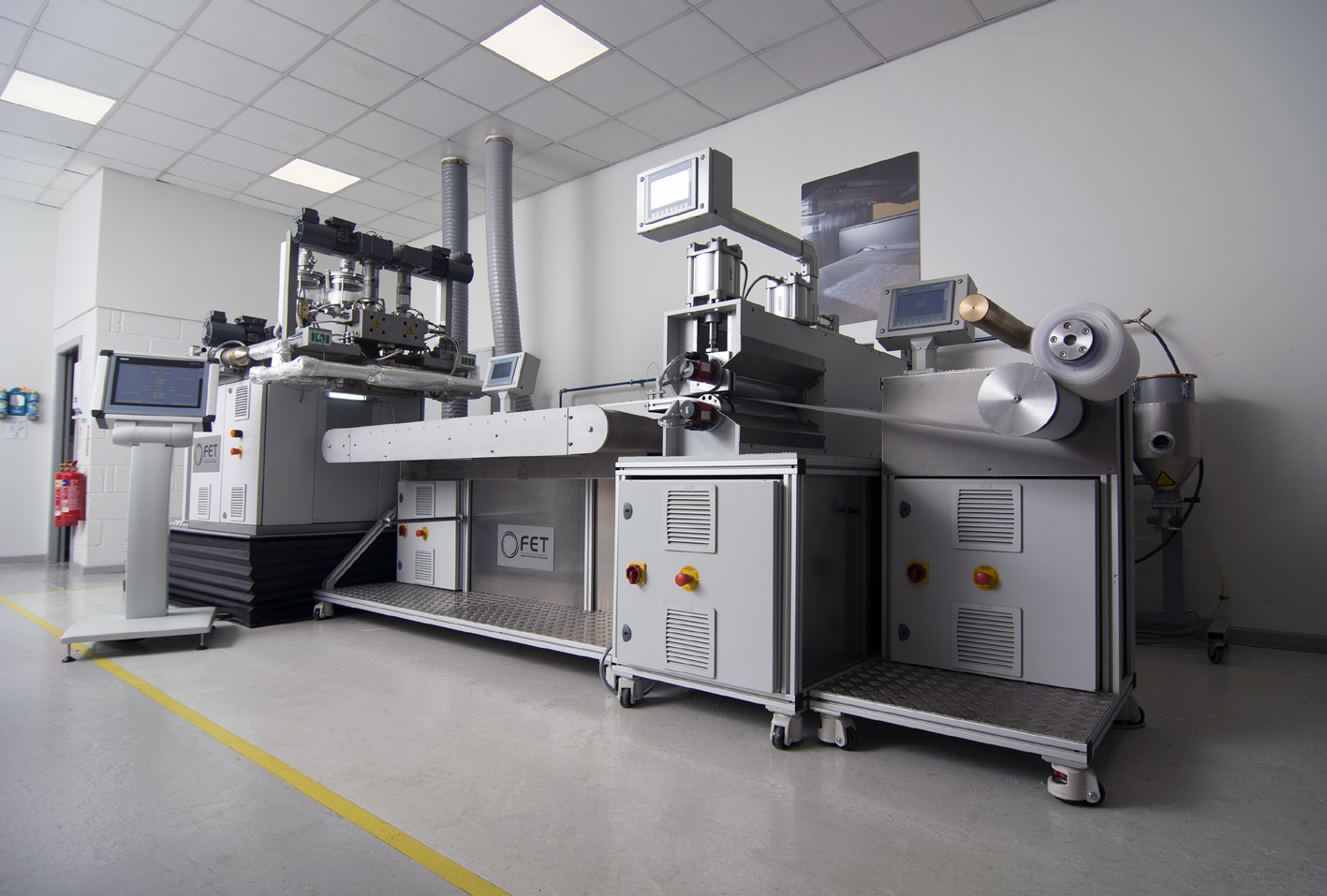
TFP nonwoven applications at Composites Europe 2018
Fibre Extrusion Technology (FET) has received unprecedented enquiries about its nonwoven meltblowing systems since the onset of the Coronavirus crisis...

2nd June 2020
Innovation in Textiles
|
Leeds, UK
 Many trials and test with sustainable polyamides and polyesters, as well as with PHAs and a range of PLAs, have been undertaken by the company.
Many trials and test with sustainable polyamides and polyesters, as well as with PHAs and a range of PLAs, have been undertaken by the company.
Fibre Extrusion Technology (FET), the Leeds, UK-based specialist in process solutions and equipment for the manmade yarns and fibre extrusion industry, has received unprecedented enquiries about its nonwoven meltblowing systems since the onset of the Coronavirus crisis.
“We’re currently running trials, preparing samples and defining specifications for companies in Germany and Italy, as well as the UK, and we could already have sold the lab line we have here many times over,” says managing director Richard Slack. “It’s primarily designed for R&D and pilot scale applications, but trials have proven it to be suitable for the low volume production of critical meltblown face mask materials. Some of the customers to whom we’ve supplied similar lines have already pivoted their production to this, which has generated further interest.
“We feel, however, that we are ideally placed to offer services to nonwoven companies who may be exploring alternatives to polypropylene in meltblown, due to our experience in working with such a wide range of fibre types.”
Medical
FET’s meltblown system was originally developed for companies looking to process high melt viscosity medical grade resorbable polymers such as PGA (polyglycolic acid), PLLA (polylactic acid) and PGH (polyhydroxl butyrate), mainly for use in implantable products and other medical devices.
The key applications for these fibres are in hernia repair patches, staple reinforcement buttresses, artificial skin, adhesion barriers periodontal and ringival repair materials and those for tendon and ligament repair.
 The inhouse meltblown system at FET.
The inhouse meltblown system at FET.
“Our meltblowing system provides medical companies and others dealing in such fibres with a simpler processing route than other techniques such as needlepunching and a wide range of structural and mechanical properties is obtainable from batch production,” Slack says. “There are also numerous options for post-processing of the webs, by calendering, point bonding or lamination.”
Performance polymers such as TPU polyurethanes and TPE thermoplastic elastomers are also processed by a number of leading sportswear companies on FET meltblown systems, while engineering polymers such as ABS and PEEK, as well as polycarbonate and halogenated polymers, are other possible raw materials.
It is in the area of sustainable resins, however, that FET believes much more can be achieved.
Meltblown polypropylene nonwovens are the critical component of the face masks needed for Covid-19 frontline workers and their scarcity on the open market has in part been the reason for the reported shortages around the world.
An estimated 40 million face masks and other disposable nonwoven-based PPE items are currently estimated to be being consumed each day, amounting to a daily 15,000-ton mountain of waste – much of which must be incinerated.
“We’ve done a lot of work with sustainable polyamides and polyesters, as well as with PHAs and a range of PLAs,” Slack says. “In the longer term, there has to be a more sustainable option than polypropylene in these products and the opportunity to explore potential alternatives – drawing on the know-how from the extensive body of tests and trials we’ve carried out in the past, as well as the machines run commercially by our customers – is something I believe makes us pretty unique in the services we can offer nonwovens manufacturers.
Conventional meltblown and spunbonded systems are usually designed for high capacity systems and are not suitable for product development, he adds.
“They consume high quantities of materials and as a consequence are not suitable for development work with high value materials or for niche applications. They also rely on specially formulated low viscosity polymers which is a further limitation which does not apply to us.
In processing finer filaments, FET has achieved structures with average mean filament diameters of 1.68 microns and 58% of between 0.5 to 1.5 microns, in web thicknesses of 37 microns with bulk density of 98 mg/ml and porosity of around 92%.
FET’s system is designed for the processing of pure polymer with no need for processing aids or additives.
“A wide range of structural and mechanical properties are obtainable, with numerous options for post-processing of the web, such as by calendering, point bonding or lamination,” Richard Slack concludes.
“More effective and sustainable PPE solutions could well be achieved through further product development.”

Business intelligence for the fibre, textiles and apparel industries: technologies, innovations, markets, investments, trade policy, sourcing, strategy...
Find out more